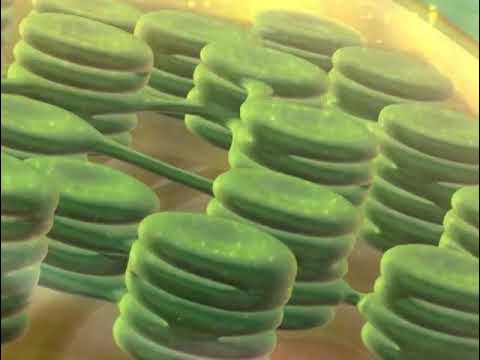WHAT IS THE DIFFERENCE BETWEEN PLANT AND ANIMAL CELL
Summary
TLDRIn this engaging video, a discussion takes place between two animated characters, Plant Cell (PC) and Animal Cell (AC), as they explore the similarities and differences between plant and animal cells. The video covers key cell structures, including the nucleus, plasma membrane, chloroplasts, cell wall, and vacuole, highlighting their unique roles and functions. The differences in shape, energy production (photosynthesis vs. consumption), and protection (cell wall vs. skin) are humorously explained, with a focus on how these features enable each cell type to thrive in its environment. It's an informative and fun comparison of cellular biology concepts.
Takeaways
- 😀 Eukaryotic cells, like plant and animal cells, have a nucleus that houses genetic material, unlike prokaryotic cells where DNA is not in a nucleus.
- 😀 The nucleus functions as the brain of the cell, controlling activities and providing instructions for protein creation.
- 😀 Both plant and animal cells have a plasma membrane, which helps protect the cell and regulate what enters and exits.
- 😀 Plant cells have chloroplasts for photosynthesis, allowing them to create their own food using sunlight, water, and carbon dioxide.
- 😀 Animal cells cannot perform photosynthesis and must consume food to obtain energy.
- 😀 Plant cells have a cell wall made of cellulose, which provides structural support and protection, unlike animal cells which lack this feature.
- 😀 The cell wall in plants helps maintain cell shape and acts as a barrier to pathogens, similar to how skin protects animals.
- 😀 Animal cells are generally round and irregularly shaped, while plant cells are often more rectangular or cube-shaped due to their rigid cell wall.
- 😀 Animal cells have structures like cilia, flagella, and centrioles, which aid in movement and cell division; plant cells lack centrioles.
- 😀 Plant cells contain a large central vacuole that stores water, food, and waste, whereas animal cells have smaller vacuoles.
Q & A
What is the main difference between eukaryotic and prokaryotic cells?
-Eukaryotic cells have a nucleus that separates their genetic material from the rest of the cell, whereas prokaryotic cells do not have a nucleus, and their genetic material is not enclosed.
Why do eukaryotic cells have their genetic material inside a nucleus?
-The nucleus protects the genetic material (DNA) from damage by keeping it secure in a 'lockbox,' ensuring it remains intact and undisturbed.
What role does the nucleus play in a cell?
-The nucleus acts as the brain of the cell. It controls the cell's activities and contains the instructions for making proteins.
What are some organelles found in both plant and animal cells?
-Both plant and animal cells contain membrane-bound organelles like the mitochondrion, endoplasmic reticulum, and Golgi apparatus.
What unique features do plant cells have compared to animal cells?
-Plant cells have chloroplasts for photosynthesis, a cell wall for structural support, and a large central vacuole for storing water and nutrients.
What is the function of chloroplasts in plant cells?
-Chloroplasts are responsible for photosynthesis, allowing plants to convert sunlight, water, and carbon dioxide into glucose (sugar) and oxygen.
Why can't animal cells perform photosynthesis?
-Animal cells lack chloroplasts, which are essential for photosynthesis. Therefore, animals must consume food to obtain energy, unlike plants which produce their own.
What is the role of the cell wall in plant cells?
-The cell wall provides structural support, protection, and rigidity to the cell. It is made of cellulose, a specialized sugar that helps maintain the shape of the plant cell.
How does the plasma membrane function in both plant and animal cells?
-The plasma membrane helps protect the cell by controlling what enters and exits, preventing harmful substances from entering the cell.
How do plant and animal cells differ in shape?
-Animal cells are typically round or irregular in shape, while plant cells have a more fixed, rectangular or cube-like shape due to their rigid cell walls.
Outlines

This section is available to paid users only. Please upgrade to access this part.
Upgrade NowMindmap

This section is available to paid users only. Please upgrade to access this part.
Upgrade NowKeywords

This section is available to paid users only. Please upgrade to access this part.
Upgrade NowHighlights

This section is available to paid users only. Please upgrade to access this part.
Upgrade NowTranscripts

This section is available to paid users only. Please upgrade to access this part.
Upgrade Now5.0 / 5 (0 votes)





